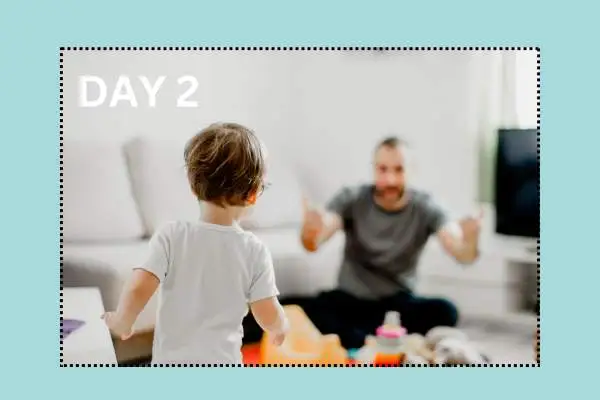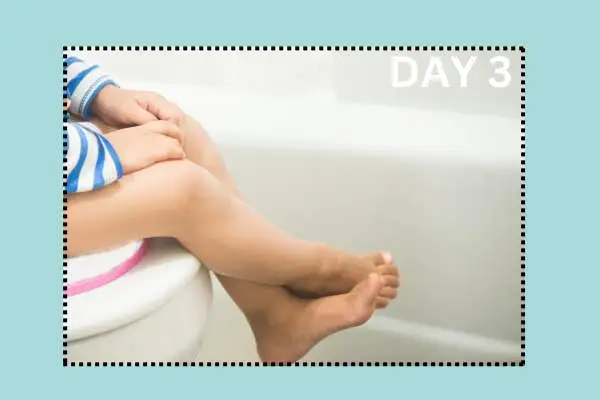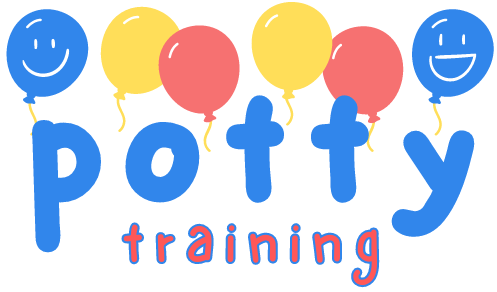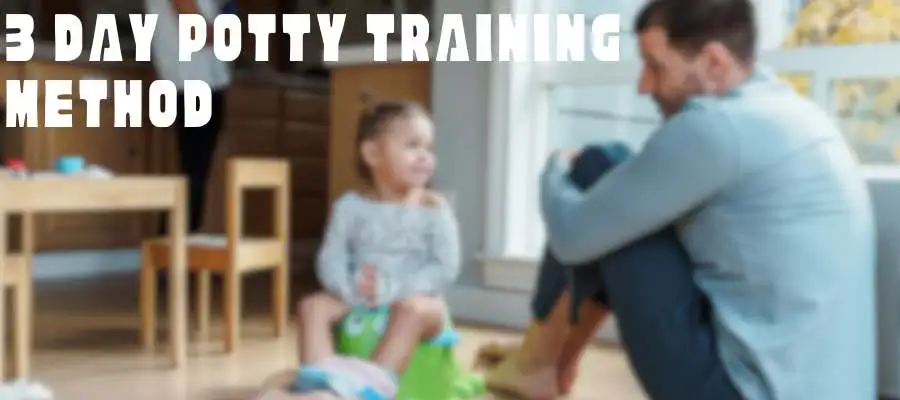Potty training is often considered one of the most challenging tasks for parents. However, it doesn’t have to be a dreadful experience. With the right approach and preparation, you can potty train your toddler in just three days. In this guide, we’ll explore a detailed method based on the “Three-Day Potty Training Method” by Laura Jensen. This method has been successfully used by many parents, including one who managed to potty train all five of her children with it.
Table of Contents
Preparation: Essential Supplies and Mindset
Before diving into the potty training process, preparation is crucial. Here’s a list of supplies you’ll need:
Potty Chair: Choose a simple potty chair that is easy to clean and has a detachable base. Place it in the bathroom to help your child associate the bathroom with the need to go potty.
Underwear: Avoid training pants or padded underwear. Opt for simple, comfortable underwear that your child will enjoy wearing. You’ll need about 20 to 30 pairs.
Liquids: Stock up on a variety of drinks, such as water, juice, lemonade, and Gatorade. The more your child drinks, the more opportunities they’ll have to practice using the potty.
High-Fiber Foods: Ensure you have plenty of high-fiber foods on hand, such as cereals, oatmeal, apples, bananas, and berries. These foods will help with bowel movements.
Snacks, Treats, and Rewards: Gather a collection of your child’s favorite snacks and small toys to use as positive reinforcement. A sticker and a sticker chart can also be very motivating.
Activities List: Plan a list of activities you can do together at home. Staying home and close to the bathroom is essential, so activities should be ones you can pause quickly if needed.
Three-Day Potty Training Method Ebook: Familiarize yourself with Laura Jensen’s ebook. Read it multiple times to fully understand the method.

🌟Day One: Starting the Journey
On the first day, follow these steps:
Morning Routine: Start the day by getting yourself ready as usual. Dress your child in just a t-shirt without a diaper or pants. This helps in quickly spotting accidents and reinforcing the training.
Introduce Underwear: Put on a pair of new underwear and emphasize that they are now a big boy or girl who doesn’t need diapers anymore.
Throw Away Diapers: To solidify the transition, have your child throw away the remaining diapers. This drastic step helps reinforce the change for both you and your child.
Show the Potty Chair: Take your child to the bathroom and show them the potty chair. Explain that this is where they will go when they need to use the toilet.
Dryness Checks: Regularly ask your child if they are dry. Praise them for keeping their underwear dry and encourage them to stay dry.
Key Phrase: Use the phrase “Tell me when you need to go potty” frequently. This gives your child control and subtly reminds them of what to do.
Offer Liquids: Keep your child hydrated by offering lots of different drinks. The more they drink, the more opportunities they will have to practice.
Focus on Cues: Stay close to your child at all times. Watch for signs that they need to go, such as stopping an activity or showing a particular facial expression.
No Camping on the Potty: Don’t let your child sit on the potty for extended periods. The goal is for them to recognize the need to go and communicate it to you.
Positive Reinforcement: Celebrate all successes, no matter how small. Use stickers, treats, and lots of praise to motivate your child.

🌟Day Two: Consistency is Key
Day two follows the same pattern as day one, with a focus on consistency and patience. Here are some additional tips:
Maintain Routine: Keep offering liquids and doing dryness checks. Use the key phrase “Tell me when you need to go potty” often.
Celebrate Success: Continue to celebrate every success. Use stickers, small treats, and prizes to keep your child motivated.
Handle Accidents Calmly: Accidents are part of the learning process. When they happen, calmly remind your child that pee and poop go in the potty. Clean up and move on without showing frustration.
Learn Their Cues: By now, you should start recognizing your child’s specific signs that they need to go. Respond quickly to these cues to help them make it to the potty in time.
Stay Positive: Keep a positive attitude throughout the day. Your encouragement and patience are crucial in helping your child succeed.

🌟Day Three: Reinforcing the Habit
By day three, your child should be getting more comfortable with using the potty. Here’s how to reinforce the habit:
Repeat the Routine: Continue with the same routine of offering liquids, doing dryness checks, and using the key phrase.
Monitor Progress: Watch for improvement in recognizing cues and making it to the potty. Celebrate these milestones enthusiastically.
Maintain Consistency: Consistency is crucial. Stick to the routine and stay focused on your child’s needs.
Encourage Independence: Encourage your child to start recognizing the need to go and heading to the potty on their own. Offer guidance as needed, but give them some independence.
Celebrate Achievements: Continue using positive reinforcement. Celebrate with stickers, treats, and prizes. Make sure to acknowledge their hard work and progress.
Handling Specific Situations
Naps and Nighttime
Naps and nighttime can be challenging during potty training. Here are some tips:
Limit Liquids Before Sleep: Reduce liquid intake an hour before nap or bedtime to minimize the chances of accidents.
Use Training Pants at Night: Consider using training pants during sleep to prevent accidents while still promoting the idea of using the potty.
Wake for Potty Trips: Gently wake your child once during the night to take them to the potty. This helps build the habit of staying dry through the night.
Poop Training
Poop training can take a bit longer than pee training. High-fiber foods can help regulate bowel movements. Here are some strategies:
Watch for Signs: Look for signs that your child needs to poop, such as squatting or grunting. Encourage them to use the potty when these signs appear.
Stay Positive: Offer lots of praise and rewards when your child successfully poops in the potty. Celebrate these achievements to reinforce the behavior.
Be Patient: Poop training can take longer. Stay patient and keep encouraging your child.
Final Tips for Success
Clear Your Schedule: Ensure you have no other commitments for these three days. Your full attention needs to be on your child.
Prepare Meals in Advance: Make freezer meals ahead of time or enlist help with cooking and cleaning to minimize distractions.
Arrange for Siblings: If you have other children, arrange for someone else to help with their needs during these three days.
Stay Positive and Patient: Your attitude will significantly impact your child’s success. Stay positive, patient, and encouraging throughout the process.
Use Rewards Wisely: Rewards should be used as motivation, not bribes. Never say, “If you go potty, you’ll get a candy.” Instead, celebrate the success after it happens.
Involve Family: Share your child’s successes with family members. Call or video chat with grandparents to show off the sticker chart and accomplishments.
Conclusion: Embrace the Journey
Potty training is a significant milestone in your child’s development. While it can be challenging, the Three-Day Potty Training Method provides a structured and supportive approach to make the process smoother. By preparing adequately, maintaining consistency, and offering plenty of positive reinforcement, you can help your child transition from diapers to using the potty with confidence.
Remember, patience and encouragement are key. Celebrate every success, stay positive, and enjoy this important journey with your child.

